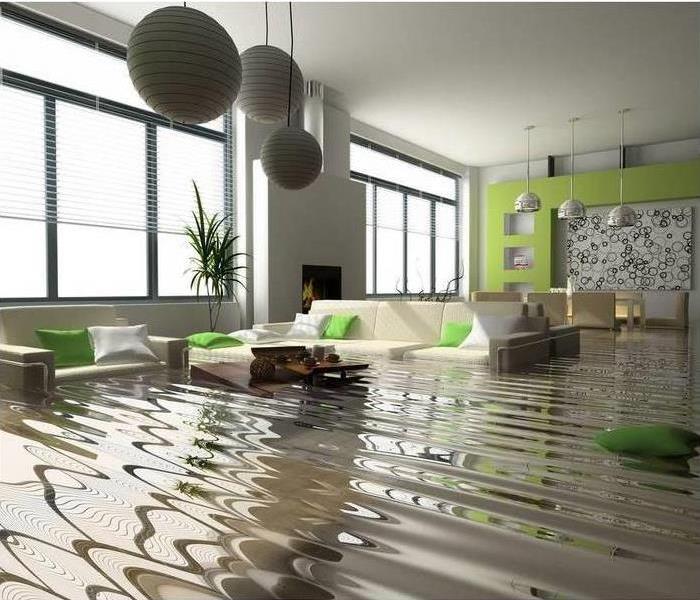Water and Storm Damage Tips
12/4/2019 (Permalink)
Water and storm damage can happen to anyone, anytime, but they’re especially common in Florida due to the humid weather and the many hurricanes that pass close to the state.
Water and storm damage can really take a toll on your property. Water will leak through many objects, rendering some of them useless while others require extensive work to restore. Electric appliances may short-circuit and food that wasn’t stored will be spoiled.
Within 1 or 2 days, mold will start developing in various parts of the home, causing an additional hazard for your health. Additionally, the water may be mixed with toxic chemicals or bacteria, or even sewage waste, so it can cause illnesses after it has dried.
Therefore, it’s recommended that you let a professional water damage restoration company handle the emergency. A licensed and insured company with the proper equipment can make sure that dangerous chemicals are removed, water is completely and safely dried, and mold growth is prevented.
However, while you call and wait for the restoration experts to arrive, there are some steps you can follow to minimize the damage.
First and foremost, you should act to ensure the safety of yourself and your family. Electrical and slip-and-fall accidents are some of the most common safety concerns. Therefore, only do activities that are safe for you to perform.
The first thing that you do should be to call a company such as SERVPRO® of Martin County to repair and restore the damage. Call us at (772) 334-8762 and give us detailed descriptions so we can assess your problem and send the adequate team to your property.
You need to ask yourself if it’s safe to stay in the house. Watch out for signs like flooded electrical appliances, black water (water contaminated by sewage waste) and weak, cracked ceiling. If the answer is “no”, then you should evacuate the property and let emergency services handle completely the situation.
However, if it’s safe enough for you to remain in your home, you can follow these water and storm damage tips until help arrives.
What to do after flooding
- Remove excess water by mopping and blotting.
- Wipe excess water from wood furniture after removal of lamps and tabletop items.
- Remove and prop wet upholstery and cushions.
- Place aluminum foil or wood blocks between furniture legs and wet carpeting.
- Turn air conditioning on for maximum drying in summer.
- Remove colored rugs from wet carpeting.
- Remove art objects to a safe, dry place.
- Gather loose items from floors.
What NOT to do after flooding
- Don't leave wet fabrics in place. Hang furs and leather goods.
- Don't leave books, magazines or other colored items on wet carpet or floors.
- Don't use your household vacuum to remove water.
- Don't use television or other household appliances.
- Don't turn on ceiling fixtures if ceiling is wet, and keep out of rooms where ceilings are sagging.
Once help arrives, our technicians will measure the damage, extract and remove leftover water, dry and dehumidify, clean and restore damaged structures. If there’s mold or harmful substances, they will handle their removal and sanitation.
Trust SERVPRO® of Martin County with your water emergency! We specialize in water damage restoration, the cornerstone of our business. We have extensive water damage restoration training, and our process emphasizes regular monitoring and documentation of the drying process from beginning to end.
You can contact us 24/7 at (772) 334-8762. Save our number for an emergency! You never know when you’ll need it.






 24/7 Emergency Service
24/7 Emergency Service